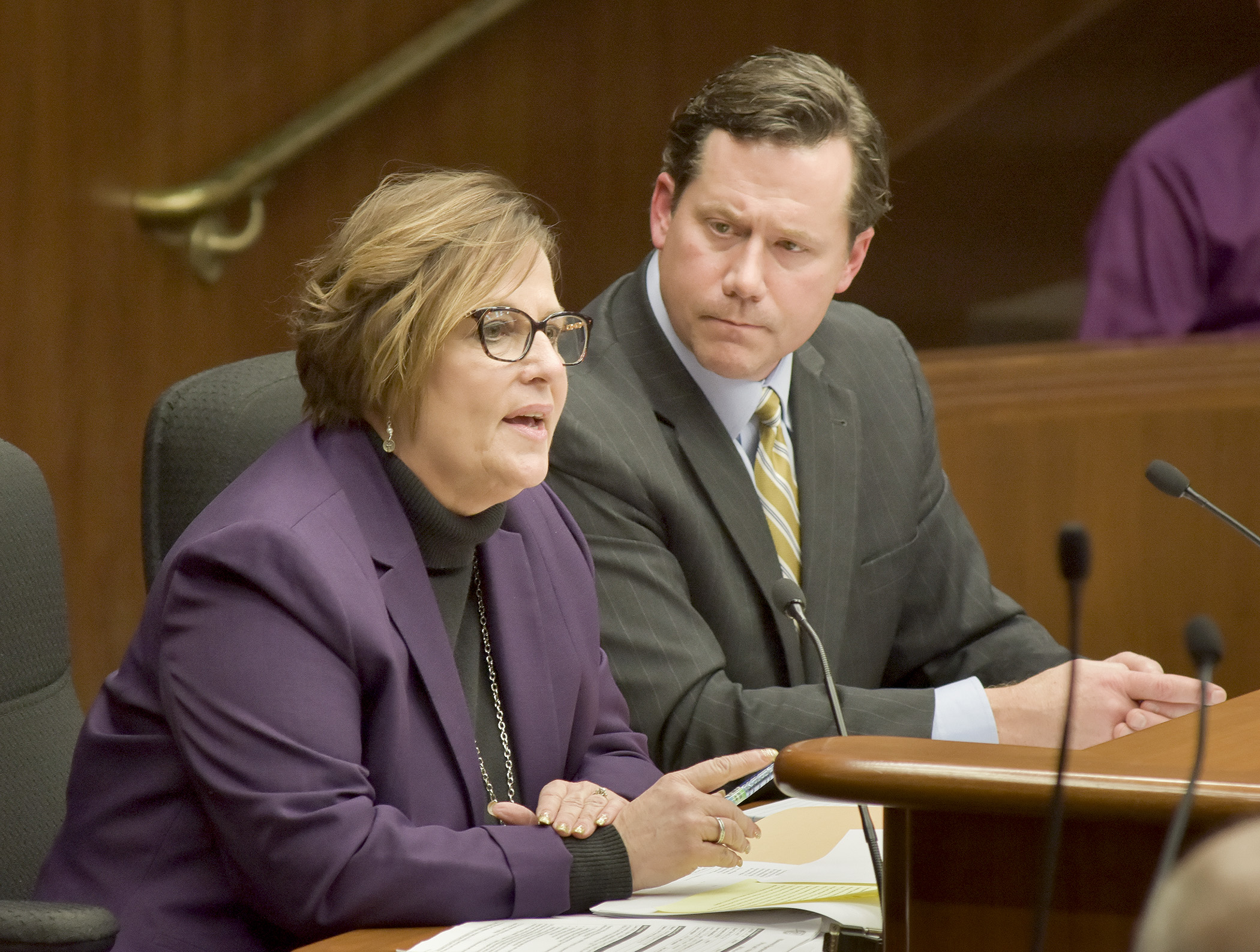House panel OKs new Real ID bill

Legislators took another turn Tuesday in their tortuous path toward getting Minnesota compliant with a decade-old federal law on state-issued identification cards.
By a 7-6 party-line, roll-call vote, the House Civil Law and Data Practices Policy Committee approved HF3, a bill sponsored by Rep. Dennis Smith (R-Maple Grove) that would direct the Department of Public Safety to bring the state into full compliance with the federal Real ID Act of 2005.
The bill is scheduled to be heard Wednesday by the House Transportation and Regional Governance Policy Committee. It has no Senate companion.
Committee approval is a long way from the position taken by the 2009 Legislature, when both bodies voted overwhelmingly — 133-0 in the House and 64-1 in the Senate — to ban state agencies from complying with the Real ID law or even plan for possible compliance in the future.
“The about-face to me is stunning,” said Rep. John Lesch (DFL-St. Paul).
Roughly one-third of legislators voting then remain in office: 41 in the House, five others who have moved to the Senate, and 19 senators.
It isn’t the first legislative move to relax the 2009 law. Last year the Legislature passed a law lifting the ban on planning for Real ID. But a “Phase 2” bill that would have allowed for implementation of a plan to make Minnesota ID cards meet federal requirements died in a conference committee.
LISTEN Full audio of Tuesday's meeting of the House Civil Law and Data Practices Committee
HF3 seeks to revive that implementation effort – in a hurry. Over the months and years, even as earlier deadlines have come and gone, legislators appear to have felt an increasing compliance urgency.
The federal government’s deadline for states to comply with Real ID Act is now less than a year away, on Jan. 1, 2018. Residents of any state not in compliance and that has not received an extension from the U.S. Department of Homeland Security would be unable to board a commercial, federally regulated airline flight beginning Jan. 22, 2018. An extension, such as the department denied to Minnesota in late 2015, would move the date on which airline travelers would need compliant ID to Oct. 1, 2020.
Smith said he has learned from an incoming Trump administration official that they are unlikely to move the deadlines for the handful of noncompliant states without an extension. Already deadlines have passed for continued access to other areas controlled by the federal government. Minnesotans with only a basic driver’s license or state ID have found themselves unable to enter certain sites, including military bases and nuclear power facilities. A passport is considered Real ID compliant.
Smith touted his bill’s two-tier system, carried over from a bill he sponsored last year. Residents would be able to opt-in for a REAL ID-compliant driver’s license, or for a noncompliant license.
An issue that confounded the bill’s progress last year came up again Tuesday: Undocumented residents would not be eligible for either noncompliant or a Real ID-compliant licenses. DFL members and a parade of testifiers advocated against putting a lawful status requirement into statute.
HF3 addresses another past concern that the federal government might expand the purposes of Real ID in the future.
Some committee members and testifiers expressed misgivings similar to the complaints that led to the 2009 ban, including erosion of civil liberties and weakening data privacy by creating what in some respects amounts to a form of national ID, and federal intrusion on what is traditionally a state function of issuing driver’s licenses.
Related Articles
Search Session Daily
Advanced Search OptionsPriority Dailies
Ways and Means Committee OKs proposed $512 million supplemental budget on party-line vote
By Mike Cook Meeting more needs or fiscal irresponsibility is one way to sum up the differences among the two parties on a supplemental spending package a year after a $72 billion state budg...
Meeting more needs or fiscal irresponsibility is one way to sum up the differences among the two parties on a supplemental spending package a year after a $72 billion state budg...
Minnesota’s projected budget surplus balloons to $3.7 billion, but fiscal pressure still looms
By Rob Hubbard Just as Minnesota has experienced a warmer winter than usual, so has the state’s budget outlook warmed over the past few months.
On Thursday, Minnesota Management and Budget...
Just as Minnesota has experienced a warmer winter than usual, so has the state’s budget outlook warmed over the past few months.
On Thursday, Minnesota Management and Budget...